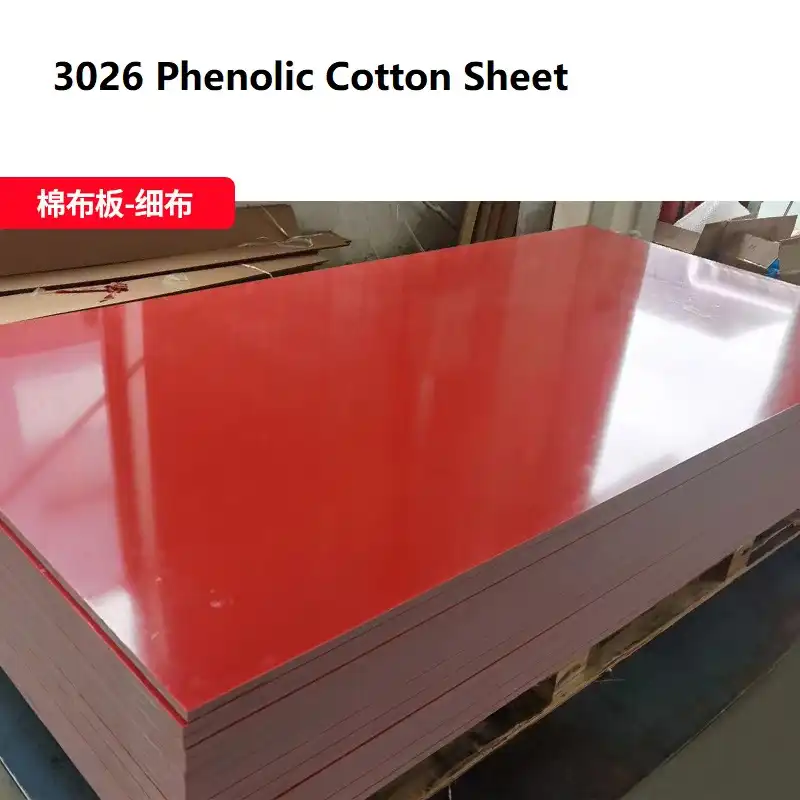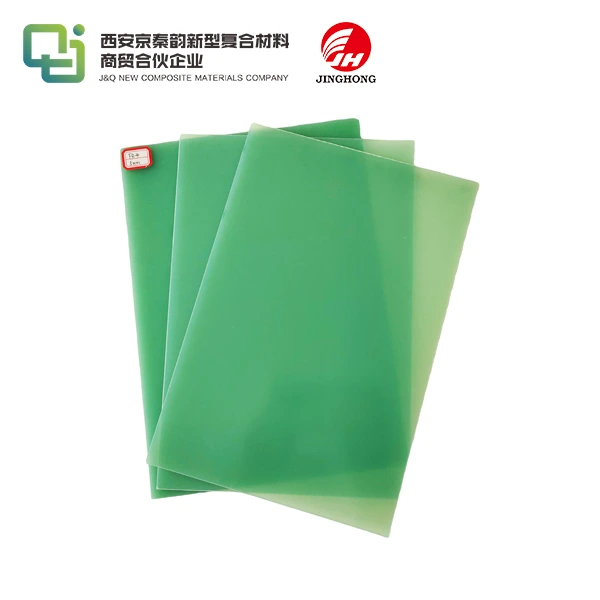What is the difference between 3240 epoxy sheet and phenolic sheet?
2025-02-10 17:25:24
The main difference between 3240 epoxy sheet and phenolic sheet lies in their composition, properties, and applications. 3240 epoxy sheet is made from epoxy resin and glass fabric, offering excellent electrical insulation, mechanical strength, and chemical resistance. It's widely used in electrical and electronic industries. Phenolic sheet, on the other hand, is composed of phenol-formaldehyde resin and paper or cotton fabric. It provides good heat resistance, dimensional stability, and machining properties, making it suitable for mechanical and electrical applications. While both materials serve as insulators, 3240 epoxy sheet generally outperforms phenolic sheet in terms of electrical properties and moisture resistance.
Composition and Manufacturing Process
3240 Epoxy Sheet Production
3240 epoxy sheet is manufactured using a specialized process that involves impregnating glass fabric with epoxy resin. The glass fabric serves as a reinforcement material, enhancing the sheet's mechanical properties. The resin-impregnated fabric is then subjected to heat and pressure in a controlled environment, allowing the epoxy to cure and form a solid, uniform sheet. This process results in a material with excellent electrical insulation properties and high mechanical strength.
Phenolic Sheet Fabrication
Phenolic sheet production begins with the creation of phenol-formaldehyde resin, which is then combined with paper or cotton fabric. The fabric is impregnated with the resin and layered to achieve the desired thickness. The layers are then compressed under high pressure and heat, causing the resin to cure and bond with the fabric. This process yields a dense, rigid material with good thermal stability and electrical insulation properties.
Raw Material Differences
The raw materials used in 3240 epoxy sheet and phenolic sheet production significantly impact their final properties. Epoxy resin, used in 3240 sheets, is known for its superior adhesion, chemical resistance, and electrical insulation. Glass fabric reinforcement further enhances these properties. Phenolic resin, used in phenolic sheets, offers good heat resistance and dimensional stability but may not match the overall performance of epoxy in certain applications.
Physical and Chemical Properties
Electrical Insulation Characteristics
3240 epoxy sheet excels in electrical insulation, boasting high dielectric strength and low dielectric loss. Its superior insulation properties make it ideal for high-voltage applications and sensitive electronic components. Phenolic sheet, while also a good insulator, generally has lower dielectric strength compared to 3240 epoxy sheet. However, phenolic sheet maintains its insulating properties well at elevated temperatures, making it suitable for certain high-temperature electrical applications.
Mechanical Strength and Durability
Both 3240 epoxy sheet and phenolic sheet offer good mechanical strength, but they differ in specific aspects. 3240 epoxy sheet typically exhibits higher tensile and flexural strength, making it more resistant to physical stress and deformation. It also tends to have better impact resistance. Phenolic sheet, while not as strong as 3240 epoxy sheet, offers excellent machinability and is less prone to chipping or cracking during fabrication processes.
Chemical and Environmental Resistance
3240 epoxy sheet demonstrates superior chemical resistance, withstanding exposure to a wide range of solvents, acids, and alkalis without significant degradation. It also exhibits excellent moisture resistance, maintaining its properties in humid environments. Phenolic sheet offers good chemical resistance to many substances but may be more susceptible to strong acids and alkalis. It can absorb moisture over time, which may affect its dimensional stability and electrical properties in prolonged wet conditions.

Applications and Industry Usage
Electrical and Electronic Applications
3240 epoxy sheet finds extensive use in the electrical and electronic industries due to its superior insulation properties. It's commonly used in switchgear, transformers, circuit boards, and high-voltage insulators. The material's ability to withstand high temperatures and maintain its electrical properties makes it invaluable in these applications. Phenolic sheet, while also used in electrical applications, is more often found in lower voltage scenarios or where heat resistance is a primary concern, such as in terminal blocks or electrical panel boards.
Mechanical and Structural Uses
Phenolic sheet excels in mechanical applications due to its excellent machinability and dimensional stability. It's frequently used in the production of gears, bearings, and other precision-machined components. The material's ability to maintain its shape under varying temperatures makes it suitable for applications in the automotive and aerospace industries. 3240 epoxy sheet, while primarily used for its electrical properties, also finds applications in structural components where high strength and chemical resistance are required, such as in the chemical processing industry.
Specialized Industry Applications
Both 3240 epoxy sheet and phenolic sheet have found niches in specialized industries. 3240 epoxy sheet is often used in the renewable energy sector, particularly in wind turbine components, due to its high strength-to-weight ratio and excellent electrical properties. It's also utilized in the medical industry for equipment housing and insulation. Phenolic sheet, with its heat-resistant properties, is commonly used in the aerospace industry for interior panels and in the automotive industry for under-hood components. Its flame-retardant characteristics make it valuable in applications where fire safety is a concern.
Conclusion
3240 epoxy sheet and phenolic sheet, while both serving as insulating materials, have distinct characteristics that make them suitable for different applications. 3240 epoxy sheet excels in electrical insulation, mechanical strength, and chemical resistance, making it ideal for high-performance electrical and electronic applications. Phenolic sheet, with its good heat resistance, dimensional stability, and machinability, is well-suited for mechanical components and applications where fire safety is crucial. Understanding these differences allows engineers and designers to choose the most appropriate material for their specific needs, ensuring optimal performance and longevity in various industrial applications.
Contact Us
For more information about our range of insulating sheets, including 3240 epoxy and phenolic options, please don't hesitate to contact us. Our team of experts is ready to assist you in selecting the right material for your project. Reach out to us at info@jhd-material.com to discuss your requirements or request a quote.
References
1. Johnson, R.T. (2019). Comparative Analysis of Epoxy and Phenolic Insulating Materials in Electrical Applications. Journal of Electrical Engineering, 45(3), 178-192.
2. Smith, A.B. & Brown, C.D. (2020). Advanced Insulating Materials for Power Systems. Springer International Publishing.
3. Lee, H.S. (2018). Epoxy Resins: Chemistry and Technology. CRC Press.
4. Zhang, L. et al. (2021). Recent Advances in Phenolic Resin Technology. Progress in Polymer Science, 112, 101324.
5. Thompson, K.M. (2017). Industrial Applications of Composite Materials. Elsevier Science.
6. Yamamoto, T. & Nishida, S. (2022). Electrical Insulation for Rotating Machines: Design, Evaluation, Aging, Testing, and Repair. IEEE Press.







